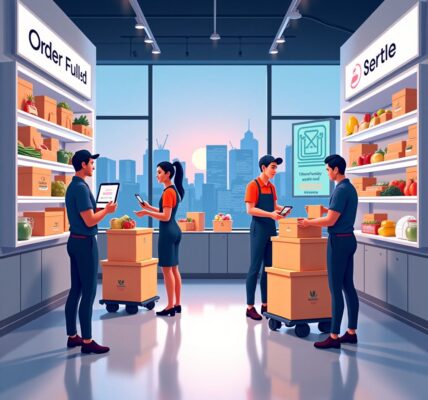Amazon continues its ambitious journey to dominate the e-commerce landscape while foraying deeper into diverse sectors, including healthcare and entertainment. By innovating in logistics and technology, the company is making strides to become an all-encompassing platform, as noted by eMarketer analyst Suzy Davidkhanian. With this expansive vision, Amazon has solidified its position as a formidable player across various markets.
One of the latest innovations from Amazon is a sophisticated delivery van computer system designed to optimize delivery efficiency. Doug Herrington, the head of Amazon Stores, emphasizes that this technology allows delivery vans to intelligently recognize stops and effectively signal which packages to drop off. This improvement not only accelerates deliveries but also encourages customers to shop more frequently. According to Herrington, Amazon aims to achieve the fastest Prime delivery speeds worldwide in 2024.
The impact of this logistical enhancement is significant. Last year, Amazon reported a reduction in shipping costs, saving 45 cents per unit shipped. This may seem minor for individual transactions, but given the scale of Amazon’s operations—recording over $575 billion in revenue—such savings translate into substantial profit margins. The company’s profits exceeded $30 billion in the same period, driven primarily by its online retail and Amazon Web Services (AWS) cloud division.
At the core of Amazon’s strategy is the Amazon Prime membership model, described as the “glue” that binds its diverse range of services. The membership not only enhances the shopping experience but also integrates various offerings, including retail, advertising, cloud computing, and streaming services. Despite its success, this very model has attracted scrutiny from regulators, leading to a US government lawsuit that alleges Amazon is expanding an illegal monopoly that harms competition.
Data plays a pivotal role in Amazon’s operations. The company leverages consumer data to formulate targeted advertising and tailor product recommendations. For instance, through partnerships like the expensive rights acquisition for streaming NFL games on Prime Video, Amazon aims to attract sports fans while gaining insights into consumer preferences. Additionally, the integration of the Alexa voice assistant facilitates seamless order placements, enhancing convenience for users, as it can now be embedded in household appliances, like washing machines, to automate supply purchases.
A significant expansion into the healthcare sector is another notable progress. Amazon has unveiled enhancements to its virtual healthcare service, One Medical, offering Prime members access to video consultations for a nominal monthly fee. Furthermore, Amazon Pharmacy utilizes the company’s logistic capabilities to ensure rapid delivery of prescriptions—aiming for delivery speeds under 24 hours for nearly half of its customers by next year. “We’re building a pharmacy in your pocket that offers rapid delivery right to your door,” said Hannah McClellan, who oversees Amazon Pharmacy.
Despite the visionary initiatives, the transition to a holistic retail model is not devoid of challenges. The company has faced setbacks in its brick-and-mortar ventures but remains ash for success. Future plans include opening an “automated micro warehouse” adjacent to a Whole Foods Market, allowing consumers to pick up online orders filled by robots while shopping for fresh groceries.
Another facet of Amazon’s strategy involves the use of artificial intelligence in enhancing the online shopping experience. Tools powered by AI assist sellers in packaging product descriptions and visuals suited to consumer interests. This technology can alter product labels dynamically, presenting terms that resonate more closely with individual users—such as emphasizing “gluten-free” or “strawberry flavor” based on preferences.
Additionally, automation within logistic centers enhances not only operational efficiency but also safety, with robotic arms skillfully managing package sorting. However, critics argue that the pressure to meet speed targets can potentially compromise warehouse safety, making conditions more precarious than in peers’ facilities.
Through relentless innovation and a multifaceted strategy, Amazon is steadfastly on its path to becoming an all-inclusive platform for consumers while enhancing the overall shopping experience. As the company marches into diverse sectors, it raises important discussions around competition, consumer data privacy, and operational safety in an industry increasingly dominated by technology.
Amazon’s multi-pronged approach demonstrates the potential of e-commerce to evolve into an ecosystem that, ideally, continues to push the boundaries of what is possible in retail, logistics, and now healthcare.












